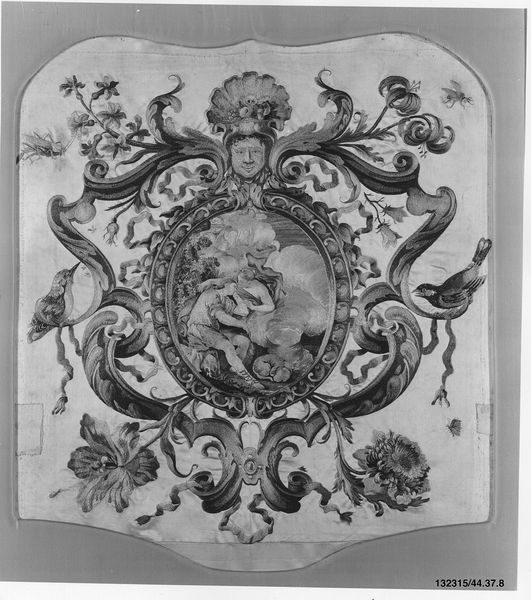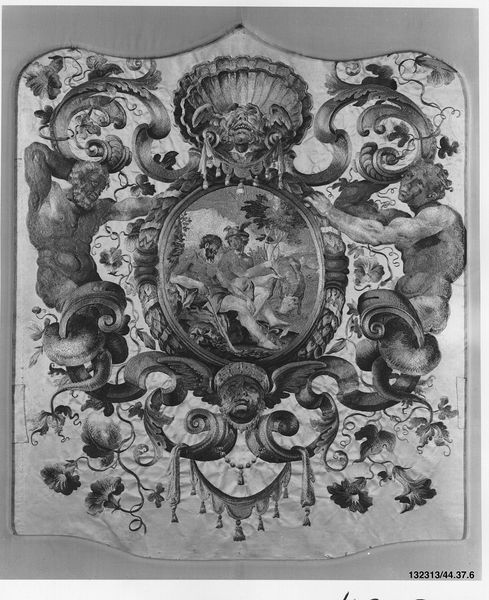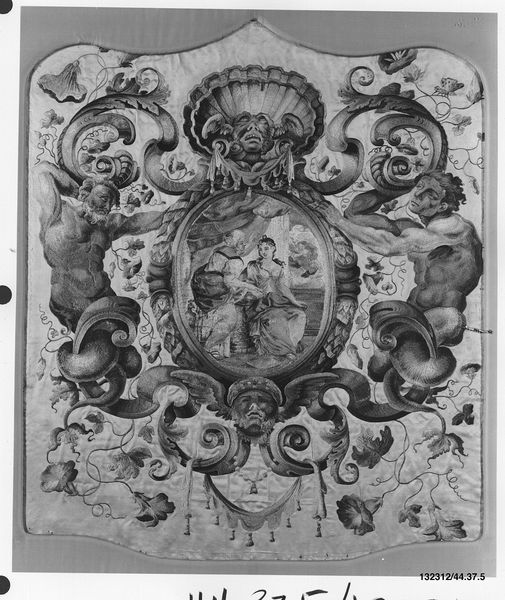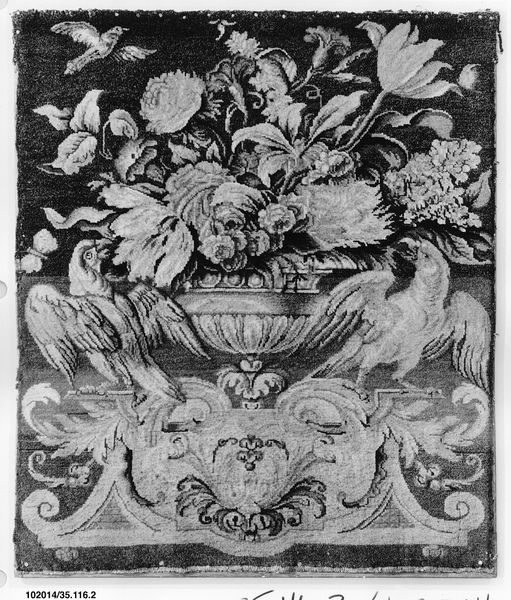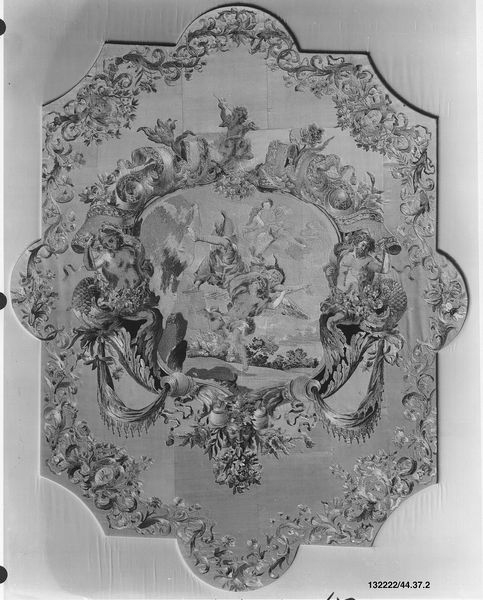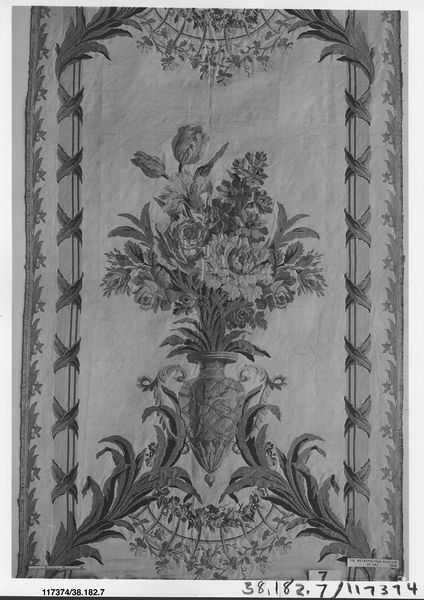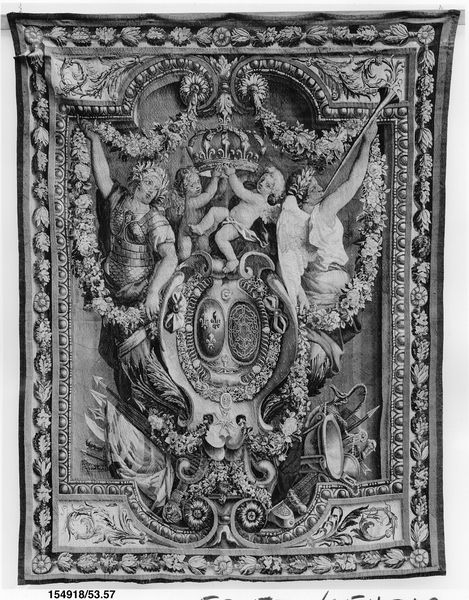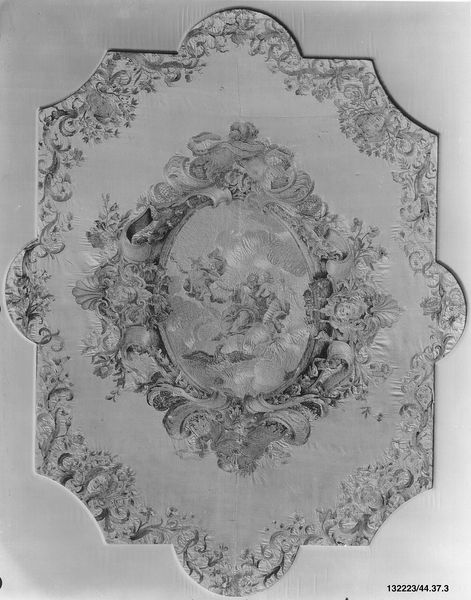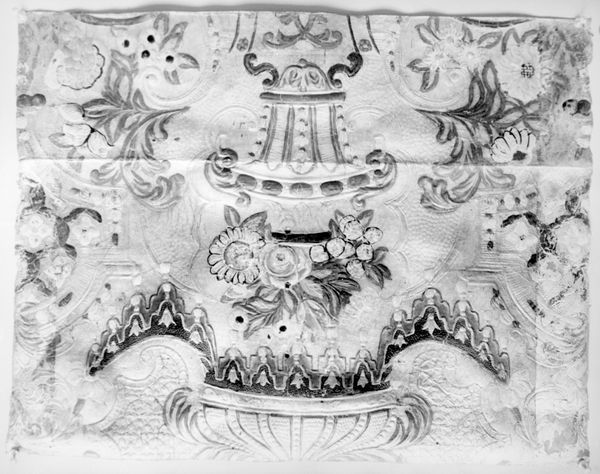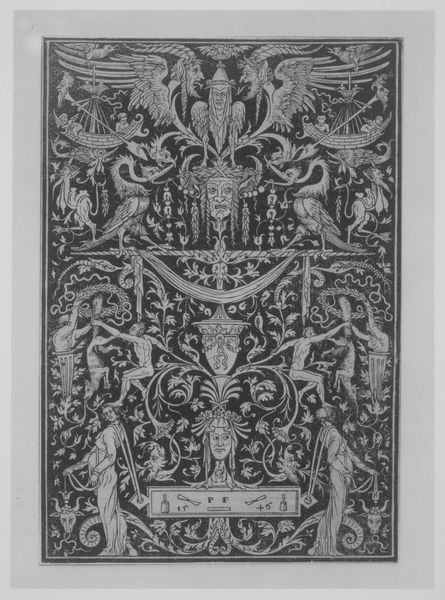
drawing, carving, print, textile, sculpture, engraving
#
drawing
#
carving
#
baroque
# print
#
landscape
#
bird
#
textile
#
figuration
#
text
#
11_renaissance
#
sculpture
#
carved
#
men
#
decorative-art
#
engraving
Dimensions: H. 25 x W. 21 1/2 inches (63.5 x 54.6 cm)
Copyright: Public Domain
Editor: Here we have Daniel Marot the Elder's "Chair Panel," dating from 1700-1715. It appears to be a drawing intended for carving or textile work. It’s ornate, definitely Baroque, and my eye keeps going to the labor involved in creating something like this. What’s your perspective? Curator: Well, from a materialist perspective, this panel isn't just a pretty design. We need to think about the hands that would have brought this drawing to life. What type of textile or material was this going to be applied to? How were artisans treated at that time? This piece becomes less about aristocratic taste and more about the lives of craftspeople. Editor: So, the design itself is secondary to the labor? Curator: Not entirely secondary, but consider the social context of production. This drawing probably circulated in workshops. Who had access to it? How did they interpret it through their own material expertise? The drawing itself might be viewed as a set of instructions influencing labor, not the end product. What implications does this have? Editor: It shifts the focus away from the 'genius' of Marot to the collaborative and material practices of the workshop. This challenges traditional art historical narratives, which focus on singular authorship. Is it problematic that a 'lesser' material is going to bear the drawing? Curator: That very hierarchy - drawing versus ‘lesser’ material – is precisely what a materialist reading contests! Textiles were major signifiers of status and comfort, yet often viewed as purely ornamental. Considering the labor invested disrupts those valuations. What happens when "high art" serves a purpose in everyday life? Editor: So, by examining the materials and production, we can uncover hidden power dynamics and challenge existing artistic hierarchies. Thanks, I never looked at it like that! Curator: Precisely! Now you might think about what kind of workshops reproduced similar artworks, and how the production of those objects changed in the following centuries.
Comments
No comments
Be the first to comment and join the conversation on the ultimate creative platform.
